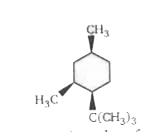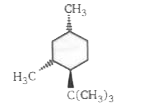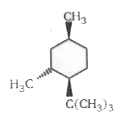Which one of the following has the smallest atomic radius?
Lithium
Fluorine
Potassium
Chlorine
The correct Answer is:B
To determine which of the given elements has the smallest atomic radius, we can follow these steps:
Step 1: Identify the Elements
We have the following elements to consider:
- Lithium (Li)
- Fluorine (F)
- Chlorine (Cl)
- Potassium (K)
Step 2: Understand the Periodic Trends
We need to recall the periodic trends regarding atomic radius:
- Atomic radius decreases as you move from left to right across a period. This is due to the increasing nuclear charge, which pulls the electrons closer to the nucleus.
- Atomic radius increases as you move down a group. This is because additional electron shells are added, making the atom larger.
Step 3: Locate the Elements on the Periodic Table
- Lithium (Li) is in Group 1 (alkali metals) and Period 2.
- Fluorine (F) is in Group 17 (halogens) and Period 2.
- Chlorine (Cl) is in Group 17 (halogens) and Period 3.
- Potassium (K) is in Group 1 (alkali metals) and Period 4.
Step 4: Compare Atomic Radii
- Between Li and F (both in Period 2), F will have a smaller atomic radius than Li because F is further to the right in the same period.
- Cl is below F in Group 17, so Cl will have a larger atomic radius than F due to the addition of another electron shell.
- K is in Group 1 and is further down the periodic table than both Li and F, so K will also have a larger atomic radius than F.
Step 5: Conclusion
From the comparison:
- Li > F (Li has a larger radius than F)
- Cl > F (Cl has a larger radius than F)
- K > F (K has a larger radius than F)
Thus, Fluorine (F) has the smallest atomic radius among the given elements.
Final Answer
Fluorine (F) has the smallest atomic radius.
---
We have the following elements to consider:
- Lithium (Li)
- Fluorine (F)
- Chlorine (Cl)
- Potassium (K)
We need to recall the periodic trends regarding atomic radius:
- Atomic radius decreases as you move from left to right across a period. This is due to the increasing nuclear charge, which pulls the electrons closer to the nucleus.
- Atomic radius increases as you move down a group. This is because additional electron shells are added, making the atom larger.
- Lithium (Li) is in Group 1 (alkali metals) and Period 2.
- Fluorine (F) is in Group 17 (halogens) and Period 2.
- Chlorine (Cl) is in Group 17 (halogens) and Period 3.
- Potassium (K) is in Group 1 (alkali metals) and Period 4.
- Between Li and F (both in Period 2), F will have a smaller atomic radius than Li because F is further to the right in the same period.
- Cl is below F in Group 17, so Cl will have a larger atomic radius than F due to the addition of another electron shell.
- K is in Group 1 and is further down the periodic table than both Li and F, so K will also have a larger atomic radius than F.
From the comparison:
- Li > F (Li has a larger radius than F)
- Cl > F (Cl has a larger radius than F)
- K > F (K has a larger radius than F)
Fluorine (F) has the smallest atomic radius.
Topper's Solved these Questions
- BOOK - ICSECHAPTER - PERIODIC PROPERTIES OF ELEMENTS EXERCISE - QUESTIONS FOR PRACTICE ON EXAMINATION PATTERN (SECTION I)2videos
PERIODIC PROPERTIES OF ELEMENTS
- BOOK - ICSECHAPTER - PERIODIC PROPERTIES OF ELEMENTS EXERCISE - QUESTIONS FOR PRACTICE ON EXAMINATION PATTERN (SECTION II)70videos
PERIODIC PROPERTIES OF ELEMENTS
- BOOK - ICSECHAPTER - PERIODIC PROPERTIES OF ELEMENTS EXERCISE - QUESTIONS FOR PRACTICE (Select the correct answer from the given choices (a), (b), (c) and (d).)30videos
PERIODIC PROPERTIES OF ELEMENTS
- BOOK - ICSECHAPTER - PERIODIC PROPERTIES AND VARIATIONS OF PROPERTIES (PHYSICAL AND CHEMICAL) EXERCISE - Questions from Previous ICSE Board Papers (2018)5videos
PERIODIC PROPERTIES AND VARIATIONS OF PROPERTIES (PHYSICAL AND CHEMICAL)
- BOOK - ICSECHAPTER - PERIODIC PROPERTIES AND VARIATIONS OF PROPERTIESEXERCISE - ASSERTION AND REASON BASED QUESTIONS5videos
PERIODIC PROPERTIES AND VARIATIONS OF PROPERTIES
Similar Questions
Knowledge Check
- Question 1 - Select One
Which one of the following has the largest atomic radius?
ALiBFCKDBr - Question 2 - Select One
Which one of the following has the largest atomic radius? a) lithium b) sodium c) potassium d) chlorine
Aa)LithiumBb)SodiumCc)PotassiumDd)Chlorine - Question 3 - Select One
Which one of the following has the smallest heat of combustion ?
A B
B C
C D
D
Which one of the following is the smallest in size?
View SolutionWhich of the following is the smallest RNA ?
View SolutionChoose the correct alternative :
Which one of the following had the smallest brain capacity?View SolutionWhich of the following ions has the smallest size?
View SolutionWhich one of the following is the smallest in size?
View Solution

